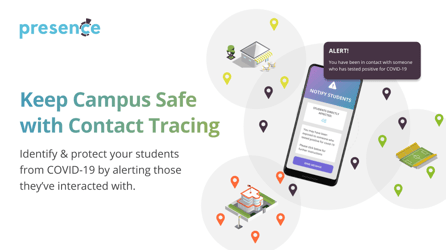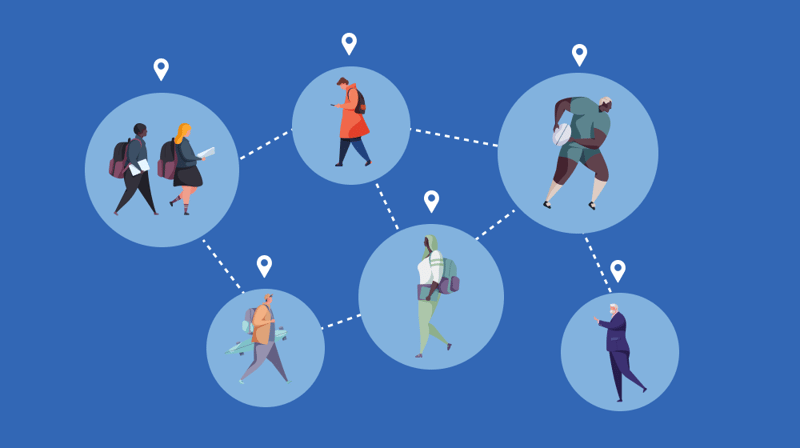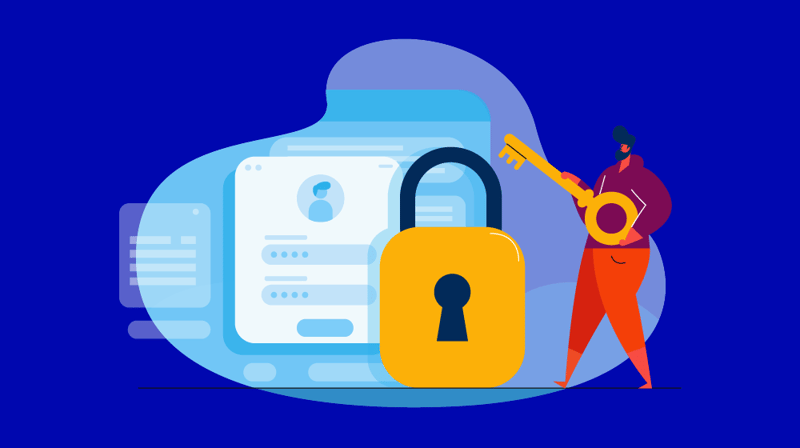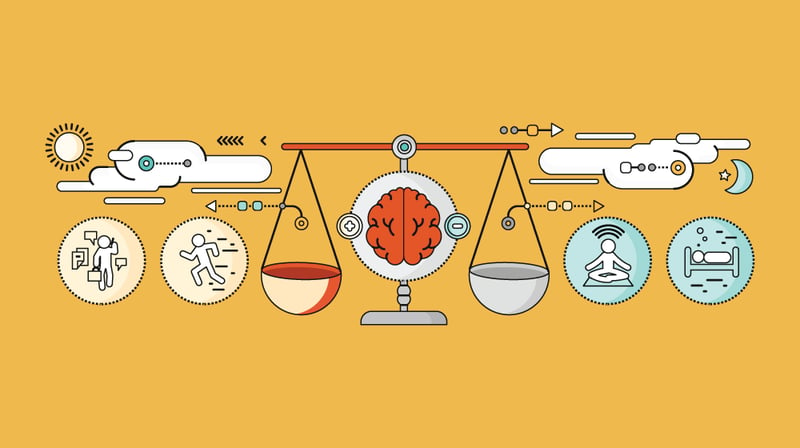You’re eager to get back to campus.
So are students. But COVID-19? Sorry; it doesn’t care about your feelings or finances.
Yet, there is one tool in the world’s arsenal that — along with consistent testing and quarantining — can make getting back to campus and resuming “normal” student programming a healthy possibility.
Tha tool is something you’ve probably heard about but may not (yet) know the vital role you could plan within it for your students. It’s… contact tracing!

What is it?
No, contact tracing is not a way of searching for old friends on Facebook or scrolling through your phone contacts; it’s a technique for reducing the spread of a virus.
“Almost every infection has a period of time during which a person with the infection is considered contagious. Contact tracing is the process of figuring out who was in enough contact with the person during the time they were infectious that they may have been exposed.” — Dr. Prathit Kulkarni, Baylor College of Medicine
The CDC outlines four key components of implementing contact tracing that will be necessary for “getting and keeping America open” before a reliable COVID-19 vaccine is widely available:
- Trace and monitor contacts of infected people. Notify them of their exposure.
- Support the quarantine of contacts. Help ensure the safe, sustainable, and effective quarantine of contacts to prevent additional transmission.
- Expand staffing resources. Contact tracing in the US will require that states, tribes, localities, and territories establish large cadres of contact tracers.
- Use digital tools. Adoption and evaluation of digital tools may expand the reach and efficacy of contact tracers.
COVID-19 is making the term more widely known to the general public, but the technique isn’t new to this particular pandemic.
Contact tracing was used during the SARS outbreak in 2003 as well as the Ebola virus outbreak in 2014. It’s also been used to combat sexually transmitted diseases and other highly communicable diseases, such as tuberculosis.
Why is it important?
“Containment of the virus is essential if we are going to be able to successfully open up our communities and begin interacting again with each other in person.” — Dr. Rebecca Fischer, assistant professor of epidemiology and biostatistics at Texas A&M University
Contact tracing isn’t merely nice-to-have. It’s vital for the safety of our country, including the health of every student, higher education staff and faculty member, and college campus.
But don’t just take my word for it. Many institutions will be required to have contact tracing programs in place before the state, city, or institutional board of trustees allows it to reopen. This includes the entire University of California system.
“They will all have to meet minimum safety standards to reopen,” says UC President Janet Napolitano. “If they’re going to reopen at all, they’re going to need to have a testing plan, a contact tracing plan, [and] a quarantine plan.”
The University of Alabama is also crafting a contact tracing plan, as are Penn State University and The University of Arizona.
When done properly, contact tracing is essentially a work-around for the more drastic virus-response strategies of banning all social events and requiring everyone to shelter in place 24/7.
Or as one infectious disease epidemiologist put it:
“Contact tracing is useful because it allows us to help people at direct risk of infection, rather than only being able to act in ways that help the whole community, which helps us use broad actions like shelter-in-place more sparingly, and also ensures that we can direct our time and attention to where they’re needed most.” — Dr. Eric Lofgren, infectious disease epidemiologist and assistant professor at The University of Washington
So, combined with proper testing and quarantine measures, institutions may indeed be able to safely (and legally) emerge beyond virtual classes and online programs this fall — if they master contact tracing.
What’s this got to do with student affairs?
I don’t know of any student affairs professional who has a side gig as an epidemiologist or spends their weekends in a virology lab.
But that’s ok; You don’t have to have a vast scientific knowledge to play a role in contact tracing.
See, contact tracing is most vital for so-called “super-spreading” events.
“Epidemics are rarely maintained by the average individuals but often by super-spreading events. Contact tracing helps us find out where and how frequently these happen, which is key in forecasting and controlling the spread of COVID-19.” — Laurent Hébert-Dufresne, assistant professor of computer science at The University of Vermont
Super-spreading events occur when a single individual infects a large number of other people — possibly dozens. Events that densely pack people in together are especially ripe for super-spreads. And it’s all the more compounded by loud talking.
In other words, here’s the formal:
more people + less space + more talking = a higher likelihood of the virus spreading
Sound familiar? It basically applies to every campus program. Student activity fairs, homecoming dances, orientation presentations, pizza parties — they all typically involve loads of students in a single space, talking excitedly to one another.
Even smaller events, like student club meetings or residence hall programs with 10 or so students, could be quite risky for each attendee — as indoor, poorly ventilated spaces (like an office or any older building) are ideal breeding grounds for the virus.
So, student affairs professionals are likely to host, plan, and supervise events that could set off a chain of infections. And while asking students who feel sick to stay away and testing everyone’s temperature at the door can help a tad, it won’t solve the problem entirely. That’s because asymptomatic or pre-symptomatic carriers can still be highly infectious.
Well then, what can you do once students are back on campus, besides strictly confine them to their residence halls and local homes, essentially making “opening back up” pointless?
You can — you guessed it — help with contact tracing! And for that, you’ll turn to technology…
How can digital tools help?
As I mentioned earlier, the CDC endorses the use of digital tools to “expand the reach and efficacy of contact tracers.”
Program tracking can be one such tool. Once a student has been diagnosed with COVID-19, you could investigate which programs they attended when they were contagious.
Then, once you have the list of events, connect with each of the other attendees. Ideally, you should test and quarantine absolutely anyone who came into contact with the recently diagnosed student. Or, at a minimum, at least contact every attendee, asking anyone who has even the mildest of symptoms (based on self-reports) to get tested for the virus.
I realize that this game plan seems overwhelming. You might have visions (or, perhaps more accurately, nightmares) of discovering that a diagnosed student recently attended a series of welcome-back programs with a grand total of 3,000 other students — all of whom you’ll have to set resources aside for to contact one-by-one and possibly quarantine.
Fortunately, Presence can help – along multiple contact tracing steps. Here’s how:
- Check students into any event (using either our card readers or any mobile device that has our app, easy for students to download)
- Pull reports in real time, immediately telling you which events (large, medium, and small) a student who has been diagnosed with COVID-19 recently attended
- Discover which other students attended those events, putting them at risk
- Mitigate risks with second-degree exposure tracking of at-risk students
- Notify at-risk students (yes all of them at once) with the simple click of a button, letting them know about their potential exposure and instructing them on what to do next
My techy teammates built this new feature to help make contact tracing easier — all so that you can plan programs with peace of mind. You’ll be able to quickly spring into action after a student is diagnosed, in order to protect individual students and to provide comprehensive data to local health departments, should they require it.
Contact tracing is a way for you, as a student affairs professional, to play a vital role in your students’ health. And you’ll even be able to truthfully add “helped in the global fight against a pandemic” to your resume! How cool is that?!
What questions do you still have about contact tracing? Connect with us on Twitter @themoderncampus or schedule a call with us today.






